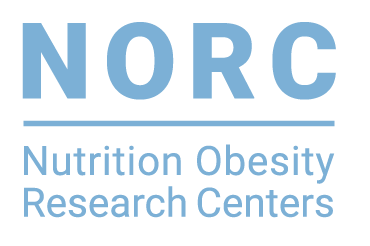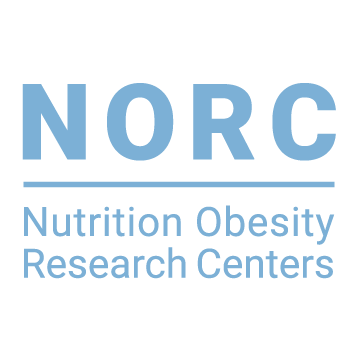The key to eating for wellness is not necessarily what foods to eat, but rather how and when we eat them, says Suzanne Judd, PhD associate professor in the University of Alabama at Birmingham’s Department of Biostatistics.
There is no definite right or wrong. It’s often a matter of personal taste and unique body chemistry. Food influences the way a person feels, how he or she sleeps and interacts with others. Too much food can lead to extra weight, and extra weight is associated with cancer, cardiovascular disease and decreased physical function. Diet can affect how people with chronic illness feel. It’s important to feed the body in a way that optimizes your own health, and the hard part is crafting the right diet for your body’s and mind’s needs, she says.
“Many of the body’s chronic illnesses result from inflammation, a catch-all term used to describe an over-active immune system or an immune system that is responding when there is not a germ to fight,”Judd says.
“Since one-third of the body’s immune system lies within the gut (large intestine, small intestine and stomach) what we eat is tightly tied to the amount of daily immune response, or inflammation, the body creates,” Judd said.
 Diets like the Whole30, a month long clean-eating program, and Paleo, which attempts to mimic what our ancestors ate, do work to reduce the number of pro-inflammatory foods the gut has to address, and therefore lead to lower levels of inflammation, she says. These diets emphasize whole, simple foods that nourish the body and advocate eating vegetables, meat, fish, nuts, seeds and some fruits, while cutting grains, sugar, alcohol and dairy. However, for many people diets like these are tough to maintain. One good option is to take breaks from a regular diet and follow the ideas behind these diets to periodically lower the body’s inflammatory load. That’s a great way to give the gut and body a rest but not feel as though you can’t eat some of your favorites from time to time, Judd says. Another option is the 90:10 rule, she says.
Diets like the Whole30, a month long clean-eating program, and Paleo, which attempts to mimic what our ancestors ate, do work to reduce the number of pro-inflammatory foods the gut has to address, and therefore lead to lower levels of inflammation, she says. These diets emphasize whole, simple foods that nourish the body and advocate eating vegetables, meat, fish, nuts, seeds and some fruits, while cutting grains, sugar, alcohol and dairy. However, for many people diets like these are tough to maintain. One good option is to take breaks from a regular diet and follow the ideas behind these diets to periodically lower the body’s inflammatory load. That’s a great way to give the gut and body a rest but not feel as though you can’t eat some of your favorites from time to time, Judd says. Another option is the 90:10 rule, she says.
“Try to have 90 percent of the food you eat come from clean foods, and then the other 10 percent of the food can be from more processed items,” Judd said. “You may find with time you feel better eating 100 percent of your diet from non processed food.”
As for the best foods to eat for wellness generally, Judd recommends that people start with fruits and vegetables and try to get about half-full on those before starting on the meats and fats.
“I would also suggest people make a list of their favorite foods — not prepared foods, but actual food that came from the ground or had a mother,” Judd said. “Macaroni and cheese did not have a mother.”
After identifying what real foods you enjoy eating, be sure to eat that as your fruit/vegetable/meat/grain/nut/seed every day. This will ensure that the body is getting tasty food that it craves. Eating for hunger and not emotion is also a huge first step to understand what the body needs; real hunger is felt at a physical level, and usually in the throat, she says.
Judd’s recommendations to maintain a healthy diet:
- Eat six to nine servings, or more, of fruit and vegetables each day, Judd says. “These can be raw, dried or cooked; but do not add a lot of sugar, animal fat or salt if they are cooked. Try to eat seasonally and locally for optimum freshness and lower cost.”
- Eat some healthy fat each day: avocado, walnuts, almonds, other nuts, olives, chia seeds, olive oil, grapeseed oil or canola oil. “Try to limit fats to four servings each day, based on hunger. A palmful, not fistful, of walnuts or cashews can go a long way toward staving off afternoon hunger.”
- Find a good source of protein. Judd says lentils, beans, seeds, fish and meat qualify. Base your protein source on your likes. “I once ate fish every day for a week to be more ‘healthy’ and was so miserable I binge-ate three huge cookies. There is no reason to make yourself miserable. Try to strike a balance between what you like for taste and what keeps you from being hungry.”
- Use physical activity to feel good, not to lose weight. “If you have eaten in the last three hours, but feel tired or shaky and think you need to eat, try a short walk outside or up and down stairs.”
- Download an app that tracks calories to help you understand how much you are eating each day. Judd suggests MyFitnessPal.
- As far as supplements, consider adding vitamin D to your diet, 2,000-4,000 IUs in summer and 4,000-8,000 IUs in winter. “Check with your doctor first to determine whether you may need more due to vitamin D deficiency. Apple cider vinegar is loaded with probiotics, which along with what you eat can change the bacteria in your gut. When I’m feeling lethargic, I add B12 and fish oil to my diet. Supplements are great but shouldn’t be the primary source of vitamins and minerals. You want them to come from your diet first.”
- When it doubt, consult a dietitian. Ask a friend, colleague or your physician for suggestions, or search for one online. “The internet is a great source for information; but don’t get too bogged down in the details, and be wary of anyone who says they have the ‘cure’ for obesity or the ‘solution’ for belly fat.”
“Developing and maintaining a healthy relationship with food is a lifelong pursuit and not a sprint to the finish line,” Judd said. “But once you start, it is a downhill race and gets easier every day.”
Read More: UAB News
###
UAB News provides the latest news and updates from the University of Alabama at Birmingham.
Research Details
- Research Center: University of Alabama at Birmingham
- Featured NORC Member(s): Suzanne Judd, PhD, Associate Professor of Biostatistics

